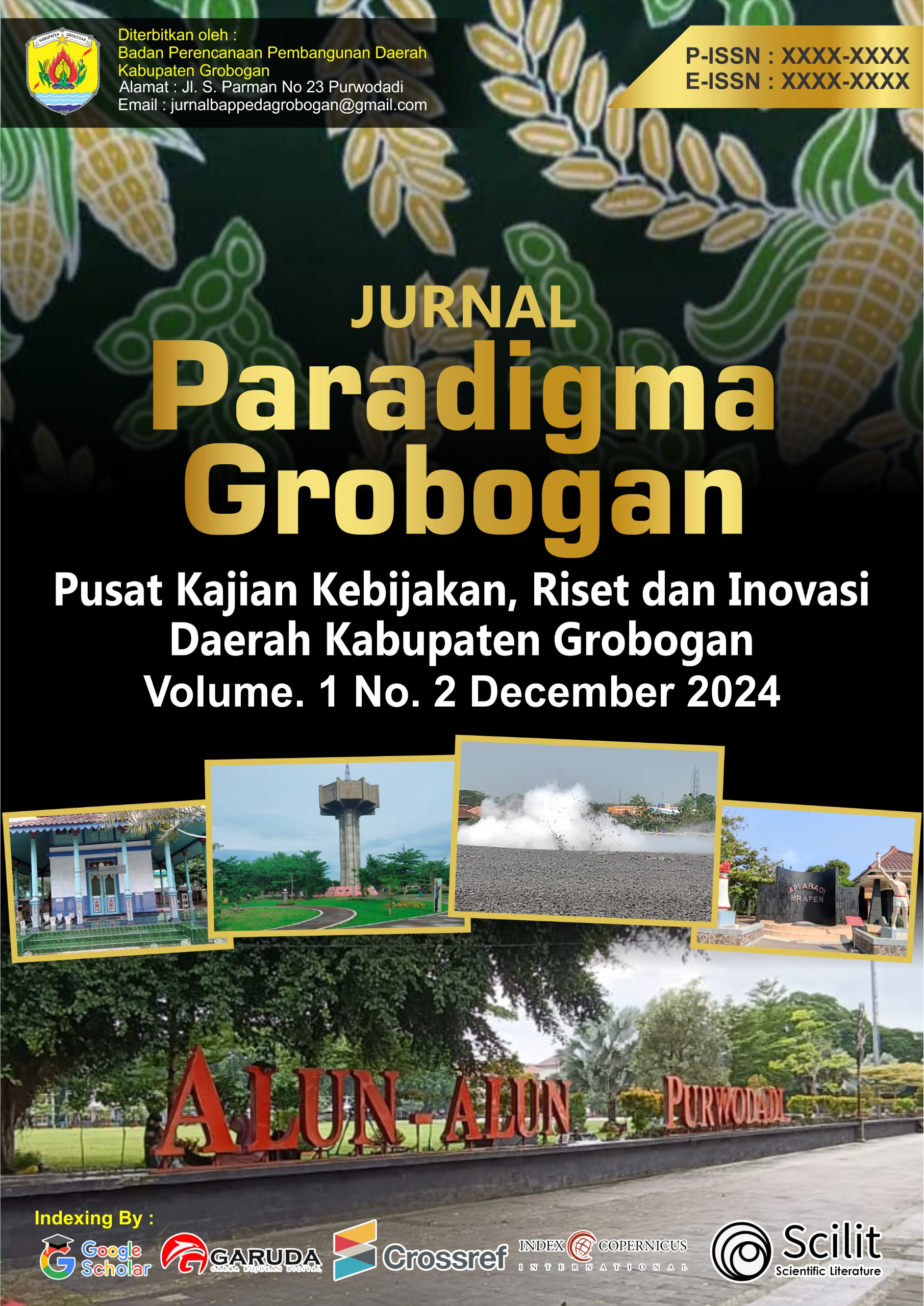Simulasi dan Analisis Kebutuhan Sumur Resapan untuk Mengurangi Dampak Kekeringan di Kabupaten Grobogan
DOI:
https://doi.org/10.58684/paradigma.v1i2.8Keywords:
Development, Roads, PoliciesAbstract
The basic principle of PAH is to channel rainwater that falls on the roof surface through gutters to be collected into a reservoir tank. Then the overflow of water that comes out of the full reservoir tank is channeled into an infiltration well. The culture of making PAH and SURES has been widely practiced in many countries. Technologically, PAH and SURES are not difficult technologies, the materials and construction can be done by the community itself. If the culture of harvesting rainwater and absorbing overflow water into the ground is socialized, then a number of benefits will be obtained, including: cheap clean water sources, increasing the amount of groundwater reserves and reducing runoff that can prevent an area from puddles and flooding.
References
Bisri, M., & Prastya, B. (2009). Sumur resapan untuk konservasi air tanah. Jurnal Konservasi, 12(2), 45-56.
Bloschl, G., & Grayson, R. (2000). Spatial patterns in catchment hydrology: Observations and modelling. Cambridge University Press.
Dwi, R., & Prastya, B. (2008). Penggunaan sumur resapan untuk pengendalian banjir di wilayah perkotaan. Jurnal Hidrologi Indonesia, 15(1), 24-36.
Hakim, D. (2020). Reduksi banjir dengan resapan berpori. Jakarta: Graha Ilmu.
Herf, J. (2009). Biopori sebagai solusi permasalahan banjir dan kekeringan. Bulletin of Environmental Studies, 3(1), 30-37.
Indonesia. (2008). Peraturan Menteri Kehutanan Nomor 70 Tahun 2008 tentang Pedoman Teknis Rehabilitasi Hutan dan Lahan.
Indonesia. (2009). Peraturan Menteri Negara Lingkungan Hidup Nomor 12 Tahun 2009 tentang Pemanfaatan Air Hujan.
Indonesia. (2019). Undang-Undang Nomor 17 Tahun 2019 tentang Sumber Daya Air. Lembaran Negara Republik Indonesia Tahun 2019 Nomor 190.
Jesus, M. E. (1980). Groundwater recharge methods. Hydrology Journal, 18(3), 10-15.
Keele, R. (1997). Sistem informasi geografi: Analisis spasial untuk pembangunan. Geospatial Analysis Journal, 6(4), 90-102.
KompasTV. (2020). Kekeringan di Kabupaten Grobogan melanda 50 desa. KompasTV. https://www.kompastv.com
Kusnaedi, D. (1995). Pengelolaan air tanah dengan sumur resapan. Jurnal Sumber Daya Alam, 8(2), 66-72.
Pranata, B., & Aji, M. (2021). Dampak kekeringan terhadap ketahanan pangan dan kesehatan. Jurnal Bencana Alam Indonesia, 7(1), 14-25.
Tood, D. K. (1980). Definisi pengisian air tanah secara buatan. Journal of Water Resources, 4(2), 60-72.
Tuman, M. (2001). Sistem informasi geografis dan analisis spasial. Journal of Geographic Information Systems, 10(3), 88-94.





